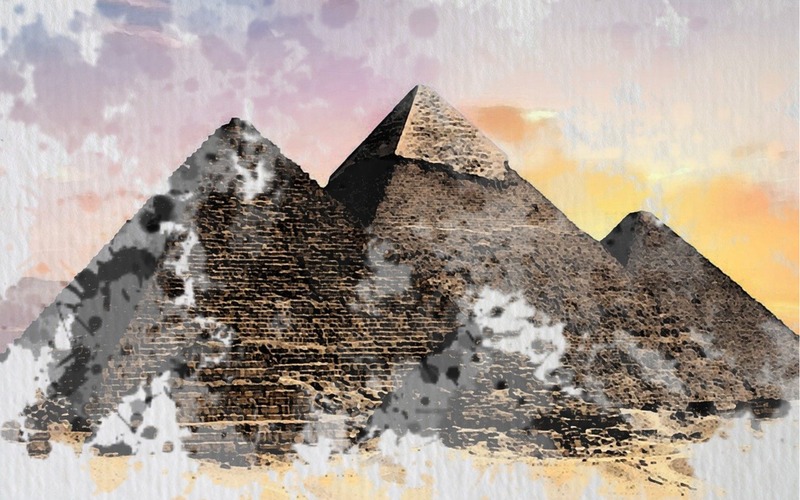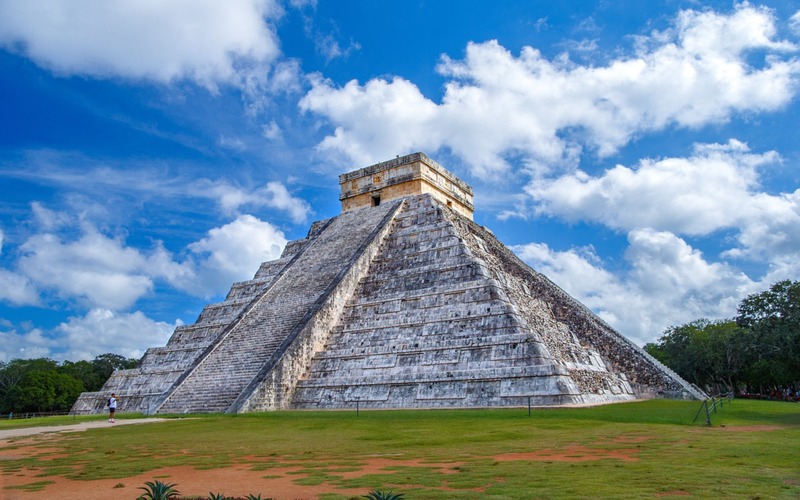What Ancient Civilizations Have Sacred Geometry?

Introduction
The introduction to the concept of sacred geometry is essential in understanding its significance in various ancient civilizations. Sacred geometry represents the belief that specific geometric shapes and proportions hold a unique and often mystical meaning. It served as a fundamental element in the architecture, art, and religious practices of many cultures, including ancient Egypt, the Maya civilization, and ancient Greece.
Exploring the role of sacred geometry in these civilizations provides valuable insights into the interconnectedness of mathematics, spirituality, and the natural world. In this expanded introduction, we will delve into the historical context and cultural significance of sacred geometry, shedding light on its profound influence on human understanding and expression.
- Introduction to sacred geometry and its significance
- Relevance of sacred geometry in ancient civilizations
- Interconnectedness of mathematics, spirituality, and nature
- Cultural implications of sacred geometry
Answer to the Question
Ancient civilizations such as the Egyptian, Mayan, and Greek civilizations integrated sacred geometry into their architecture, art, and religious practices. The use of geometric forms and mathematical principles in these civilizations reflected their deep understanding of universal order and beauty. Let’s explore the fascinating intersection of mathematics, art, and spirituality in these ancient cultures.
Egyptian Civilization and Sacred Geometry
Significance of Geometry in Egyptian Culture
The significance of geometry in Egyptian culture extended far beyond architectural and construction purposes. Geometry was intricately woven into the fabric of daily life, religion, and society, serving as a symbol of cosmic order and divine knowledge.
The Egyptians believed that geometric principles held the key to understanding the universe and the mysteries of existence. Sacred geometry, encompassing precise geometric shapes and principles, was integrated into the design of not only monumental structures like the pyramids and temples but also everyday objects, amulets, and hieroglyphs.
Furthermore, the meticulous alignment of the pyramids with the cardinal points and their orientation toward specific celestial bodies such as the North Star and the sun represented the Egyptians’ profound reverence for the cosmic forces and their harmonious integration into earthly constructions.
The use of geometric proportions in temple architecture was not simply an aesthetic choice but a reflection of the Egyptians’ belief in the interconnectedness of the divine, the natural world, and the human realm.
Additionally, the application of geometry in city planning and land division showcased the Egyptians’ dedication to maintaining cosmic balance and order in their physical environment. The intricate geometry of the Nile River’s flooding patterns also influenced agricultural practices and reinforced the Egyptians’ spiritual connection to the land and its life-giving force.
Mayan Civilization and Sacred Geometry
Sacred Geometric Structures in Mayan Architecture
In the realm of Mayan architecture, sacred geometric structures served as tangible expressions of the Mayan civilization’s profound spiritual beliefs and advanced knowledge of mathematics and astronomy. These structures, such as temples, pyramids, and ceremonial centers, were meticulously designed to embody the inherent sacredness of geometric forms and their interconnectedness with the cosmos.
Mayan architects infused their sacred geometric structures with symbolic representations of cosmological principles, creating a harmonious fusion of art, spirituality, and scientific understanding. The intricate layout of Mayan cities, featuring a network of interconnected geometric patterns, was a reflection of the Mayans’ reverence for the divine order inherent in geometric relationships.
Moreover, the precise alignment of Mayan architectural elements with celestial phenomena, such as solstices and equinoxes, underscored the Mayans’ deep connection to the celestial realms.
Through the integration of fractal patterns, intricate geometric shapes, and mathematical precision, the Mayans sought to establish a bridge between the physical realm and the spiritual dimensions, embodying their unwavering respect for the interconnectedness of all existence.
Greek Civilization and Sacred Geometry
Discovery of Sacred Geometry in Greek Art and Architecture
The discovery of sacred geometry in Greek art and architecture is a testament to the profound influence of mathematical principles on the cultural and artistic expressions of the ancient Greeks. Sacred geometry, characterized by the use of geometric shapes and proportions with symbolic significance, permeated every aspect of Greek creativity and craftsmanship.
The interplay between mathematics and artistic creation was particularly evident in the construction of architectural marvels such as the Parthenon, where the meticulous application of geometric principles resulted in a structure that embodies both aesthetic beauty and mathematical precision.
Furthermore, the incorporation of the golden ratio, a mathematical proportion revered for its aesthetic harmony, extended beyond individual artistic endeavours to become a defining feature of Greek art and architecture. The intricate use of the golden ratio in sculptural reliefs, temple facades, and decorative motifs reflects the Greeks’ unwavering commitment to infusing their creations with divine proportions and visual balance.
- Exploration of geometric symbolism in pottery, mosaics, and frescoes
- Influence of geometric harmony on the depiction of mythical tales and deities
- Impact of sacred geometry on the spiritual and philosophical dimensions of Greek art
Conclusion
The exploration of sacred geometry in ancient civilizations reveals the universal significance of geometric symbolism, mathematical precision, and spiritual depth in human history.
From the breathtaking monuments of Egypt to the enigmatic structures of the Mayans and the artistic achievements of the Greeks, sacred geometry has left an indelible mark on the world’s cultural heritage. It serves as a testament to the enduring connection between mathematics, art, and the human quest for beauty, order, and transcendence.







